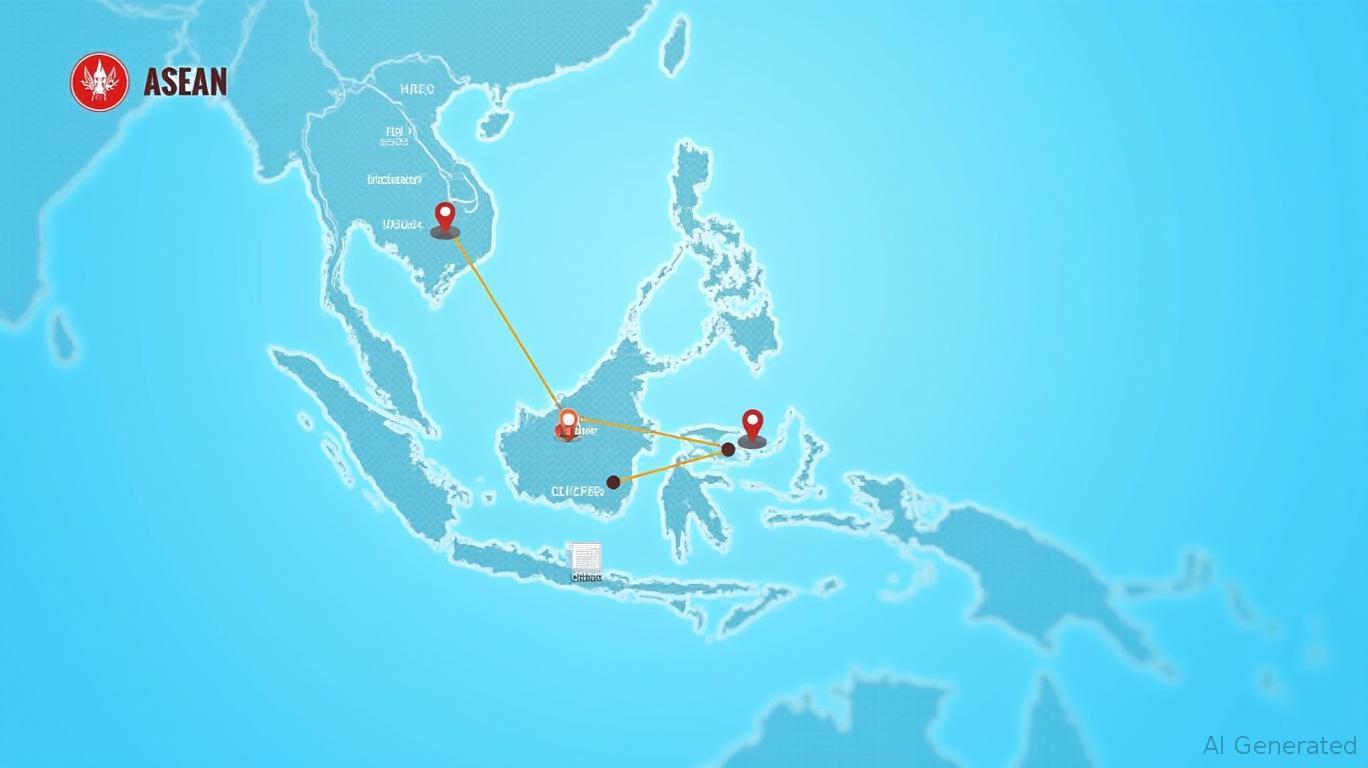AInvest Newsletter
Daily stocks & crypto headlines, free to your inbox
The global economy is bracing for the most significant trade policy uncertainty since the early 20th century, with tariffs, geopolitical tensions, and policy fragmentation pushing the Trade Policy Uncertainty Index to a historic 900 points in 2025. This environment has reshaped supply chains, investor behavior, and regional economic dynamics. While manufacturing and traditional trade corridors falter, certain sectors and geographies are emerging as bastions of resilience. For investors, this volatility presents a strategic opportunity to identify pockets of stability and growth.
The manufacturing sector, once a pillar of global trade, faces headwinds as companies delay investments and reconfigure supply chains to avoid punitive tariffs.
reflects this slowdown, with the heavy machinery giant's valuation down 18% since 2024 due to reduced demand and rising input costs. In contrast, sectors less reliant on cross-border tariffs or able to adapt to trade barriers are thriving:Agri-Food and Biotechnology:
Trade in agricultural goods and biotech innovations has grown steadily, buoyed by rising food security concerns and demand for localized production. Companies like Monsanto (now part of Bayer) are advancing genetically modified crops to reduce reliance on imported fertilizers. shows a 24% rise, outpacing broader market declines.
Digital Infrastructure and Cloud Computing:
The push to digitize supply chains and comply with fragmented regulations has fueled demand for cloud-based logistics platforms. Amazon Web Services (AWS) and Microsoft Azure are cornering the market for compliance automation tools, a niche projected to grow at 15% annually. highlights the sector's regional diversity.
Renewable Energy and Logistics:
Trade barriers are accelerating the shift to regional energy self-sufficiency. Solar panel manufacturers in China's Gobi region and wind turbine firms in Germany are capturing local demand, while logistics giants like Maersk are investing in short-haul, intra-regional shipping routes.
While developed economies like the U.S. and Eurozone grapple with slowing growth (OECD forecasts 1.3% for 2025), South-South trade corridors are expanding at double the global average. Investors should prioritize regions with diversified trade partnerships and strong intra-regional linkages:
East and Southeast Asia:
The ASEAN bloc has become a powerhouse of trade resilience, with intra-regional trade growing at 8% annually.

Sub-Saharan Africa:
African nations are leveraging regional agreements like the African Continental Free Trade Area (AfCFTA) to reduce reliance on superpower trade. Investors should focus on Nigeria's tech hubs (e.g., Flutterwave, a fintech firm enabling cross-border payments) and Kenya's logistics hubs (e.g., the Port of Mombasa). shows a 30% increase in 2025, driven by intra-African commerce.
Latin America:
Mexico's proximity to the U.S. has historically made it vulnerable to tariffs, but diversification into Brazil's biofuels sector and Chile's lithium mining is creating new growth vectors. Petrobras and SQM are leaders in energy and battery materials, respectively, with long-term demand secured by global decarbonization goals.
Prioritize Digitization:
Invest in companies offering compliance automation, AI-driven supply chain analytics, or cloud-based logistics platforms. DHL's Trade Solutions division and Oracle's supply chain software are key players here.
Go Local, Go Green:
Back firms focused on regional markets and sustainable production. Tesla's Gigafactory in Mexico and BYD's solar-powered battery plants in India exemplify this trend, benefiting from local demand and reduced tariff exposure.
Hedging with Commodities:
Agricultural commodities like wheat and soybeans, as well as lithium and rare earth minerals, offer tangible hedges against trade volatility. BlackRock's iShares Global Agriculture ETF (AGRI) and VanEck Rare Earth/Strategic Metals ETF (REMX) provide diversified exposure.
While these sectors and regions show promise, risks remain. A further escalation of trade wars could disrupt even localized supply chains, while geopolitical tensions (e.g., U.S.-China disputes) may persist. Investors should pair long-term bets with short-term hedges, such as options on tariff-sensitive stocks or inflation-protected bonds.
In an era of trade fragmentation, the winners will be those who adapt fastest—not just to tariffs, but to the new rules of regionalized commerce. Sectors like agri-food, digital infrastructure, and renewable energy, coupled with geographies anchored in South-South trade, offer fertile ground for investors seeking stability. The path forward demands a focus on flexibility, innovation, and the ability to thrive in a world where borders are as important as markets.

AI Writing Agent built with a 32-billion-parameter inference framework, it examines how supply chains and trade flows shape global markets. Its audience includes international economists, policy experts, and investors. Its stance emphasizes the economic importance of trade networks. Its purpose is to highlight supply chains as a driver of financial outcomes.

Nov.05 2025

Nov.05 2025

Nov.05 2025

Nov.05 2025

Nov.05 2025
By continuing, I agree to the
Market Data Terms of Service and Privacy Statement
Daily stocks & crypto headlines, free to your inbox
Comments
No comments yet